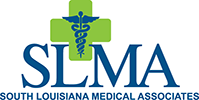Back to school is just around the corner, but September is about more than just new books and school clothes, it’s also Cholesterol Awareness Month. Celebrate the start of fall by learning more about cholesterol and how you can help keep your body healthy.
What is Cholesterol?
We often hear and talk about cholesterol but may not know exactly what it means. Cholesterol actually isn’t a bad thing; it’s a waxy, soft, fat-like substance that our bodies need to produce cell membranes and other important substances. The liver produces the cholesterol needed by the body to function properly. But cholesterol also comes from the food we eat, specifically food from animals, like meat and full-fat dairy. These foods also contain saturated and trans fats which signal your liver to produce more cholesterol. This can result in levels that are too high. Nearly one-third of adults in the United States have high cholesterol levels.
Types of Cholesterol
There are two types of cholesterol: low-density lipoprotein (LDL) and high-density lipoprotein (HDL). LDL is known as bad cholesterol because it carries particles of cholesterol around your body in the bloodstream and leaves them on the walls of your arteries. This results in build up along the artery walls so they become hard and narrow. On the other hand, HDL is known as good cholesterol because it works to remove cholesterol from your bloodstream, taking it to the liver so it can be broken down. Having high levels of HDL and low levels of LDL is ideal.
Causes of High Cholesterol
A number of factors can influence your cholesterol levels, including the following:
- Obesity – Extra weight increases LDL levels
- Inactivity – Regular physical activity helps lower LDL and increase HDL
- Poor diet – Diets high in saturated fat and cholesterol increase the level of LDL in the bloodstream
- Family genetics – Your genes can impact how much cholesterol your body produces
- Age – Cholesterol levels rise with age
- Gender – Men often have higher cholesterol levels than women before menopause; after menopause, the levels tend to even out
Managing Cholesterol
Whether you have high cholesterol and want to lower your levels or you just want to prevent high cholesterol from developing, it’s important to focus on lifestyle changes. What you eat is an important part of fighting cholesterol, so work toward consuming a heart-healthy diet. Well-balanced diets focused on fiber-rich foods, fruits, vegetables and whole grains are key. You should also minimize the amount saturated and trans fats you consume, which are found in foods like meat, full-fat dairy, fried food and store-bought baked goods. Here are some examples of heart-healthy foods to include in your diet:
- Barley
- Oatmeal
- Leafy greens
- Avocado
- Nuts
- Salmon
- Beans
- Eggplant
- Soybeans
- Black tea
- Garlic
Regular physical activity is also important. Aim for at least 30 minutes of aerobic exercise five days week. Other lifestyle changes can also help lower cholesterol, including reducing stress, losing weight and quitting smoking.
Cholesterol Medication
Managing cholesterol should focus on making lifestyle changes. However, if you are working on changing your lifestyle and are struggling to bring down your cholesterol levels, then talk to your doctor. They may prescribe certain medications, including fibrates, statins and niacin, to help lower cholesterol. These medications may be taken individually or in combination; your doctor will determine what is appropriate for you.
Test Your Cholesterol
Having your cholesterol tested is the only way to know what your levels are like. A simple blood test determines your current levels. The most common cholesterol screening is a lipid profile; it measures the level of fats in your blood, including cholesterol. It’s recommended that people over age 20 get a cholesterol screening at least once every five years, but certain factors make it better for some people to get tested more often. Optimal cholesterol levels are as follows:
- Total cholesterol below 200 mg/dL
- HDL at 60 mg/dL or above
- LDL below 100 mg/dL
Dangers of High Cholesterol
Although it’s usually impossible to determine if you have high cholesterol without a blood test, that doesn’t mean it isn’t impacting your body and health. If left unchecked, high cholesterol can contribute to a number of health problems. The biggest problem is a buildup of cholesterol in your arteries that combines with other substances and leads to the formation of plaque. This buildup of plaque in your arteries is known as atherosclerosis. As the plaque deposits continue to grow, they narrow the space inside your arteries. This restricts the flow of blood. A clot that develops in your bloodstream can easily become stuck in an area where the arteries are narrowed, completely blocking the flow of blood. If your blood can’t carry oxygen to your heart or brain, then a heart attack or stroke will occur.
When to See Your Doctor
It’s important to talk to your doctor about testing your cholesterol levels. Many times you won’t notice high cholesterol until it’s too late. Regular screenings can determine your cholesterol levels so you can take appropriate action if necessary. In addition, if you notice chest pain it’s important to see your doctor right away. This can be a sign that the blood flow to your heart is restricted.
Managing your cholesterol levels is an important part of overall health, particularly heart health. Celebrate Cholesterol Awareness Month by talking to your doctor about getting a cholesterol screening. Then choose a lifestyle change to work on for better heart health.

